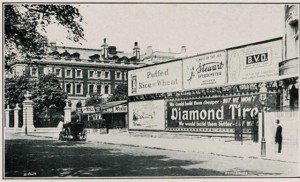From Signs to Scenic Vistas: Aesthetic Regulation's Unfinished Agenda
Monday, November 4, 2013
The Arsenal in Central Park, 830 Fifth Avenue (at East 64th Street)
New York City
RSVP to [email protected].
6:30-8:30 p.m.

In 1913, the first step was taken in New York City to advance the then radical concept that a city could regulate aesthetics on the grounds of “public beauty.” This notion took the form of a constitutional amendment proposed for New York State by the Mayor’s Billboard Advertising Commission of the City of New York. This early amendment, attributed to Albert Bard, was the first known iteration of what would become in 1956 the state enabling legislation giving cities across New York the authority to protect individual landmark buildings and historic districts. Despite the potentially broader scope of that authority, we still lack the ability to protect such aesthetic values as scenic and historic views of the Brooklyn Bridge, the Empire State Building, or the Statue of Liberty, as well as distinctive neighborhoods unlikely to be protected through landmark designation.
In commemoration of the 100th anniversary of the Report of the Mayor’s Billboard Advertising Commission of the City of New York, the New York Preservation Archive Project is hosting a program examining the origins of aesthetic regulation in New York State, delving into present day situations where policy has fallen short in protecting historic and scenic views, and discussing potential tools to solve these shortcomings. A brief presentation by Anthony C. Wood, author of Preserving New York: Winning the Right to Protect a City’s Landmarks, on the legacy of the 1913 proposed amendment, will be followed by a robust panel discussion and Q & A. Panelists include Ronald Lee Fleming, Chair of Scenic America, Matthew Goebel, author of Aesthetics, Community Character, and the Law, and Carol Clark, Adjunct Associate Professor at Columbia University’s Graduate School of Architecture Planning and Preservation.
Co-sponsored by the New York Preservation Archive Project, Scenic America, the Historic Districts Council, the Neighborhood Preservation Center, the Historic Landmarks Preservation Center, and the Historic House Trust of New York City
I have a small spoon that my great grandfather left me with The Chemist Club imprinted on it. I would be interested in finding out the significance of this spoon. The manufacture of the spoon is Gorham. Thank you for any information you can give me on this spoon.
Hello Haydn,
We have no information about such things. You can contact the New York Historical Society. They have a research dept. and may be able to find more information for you. Hope this helps.